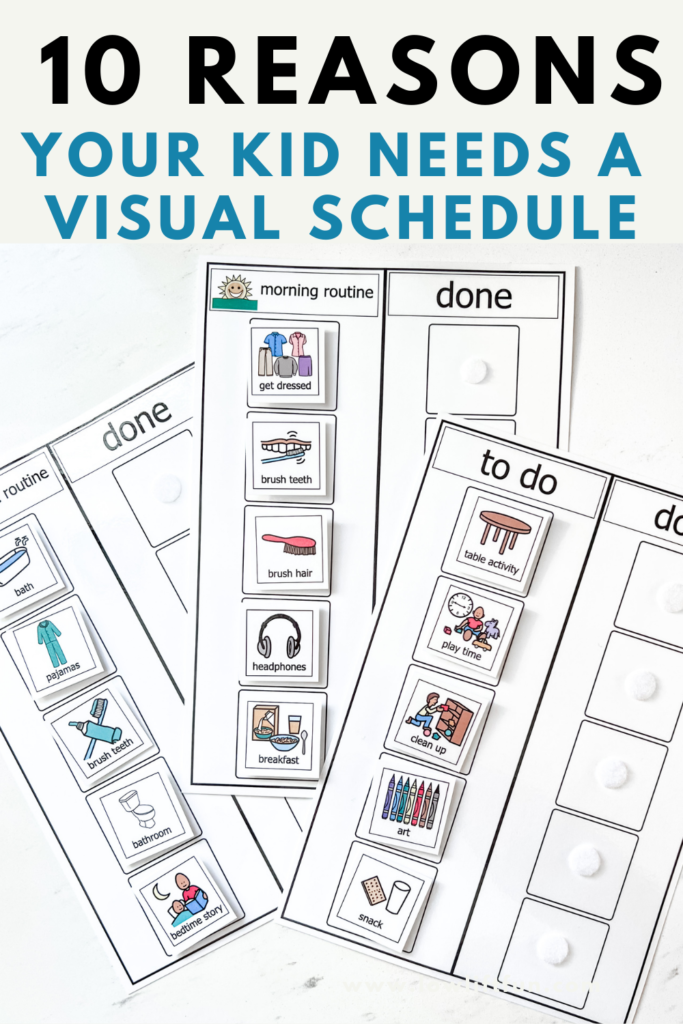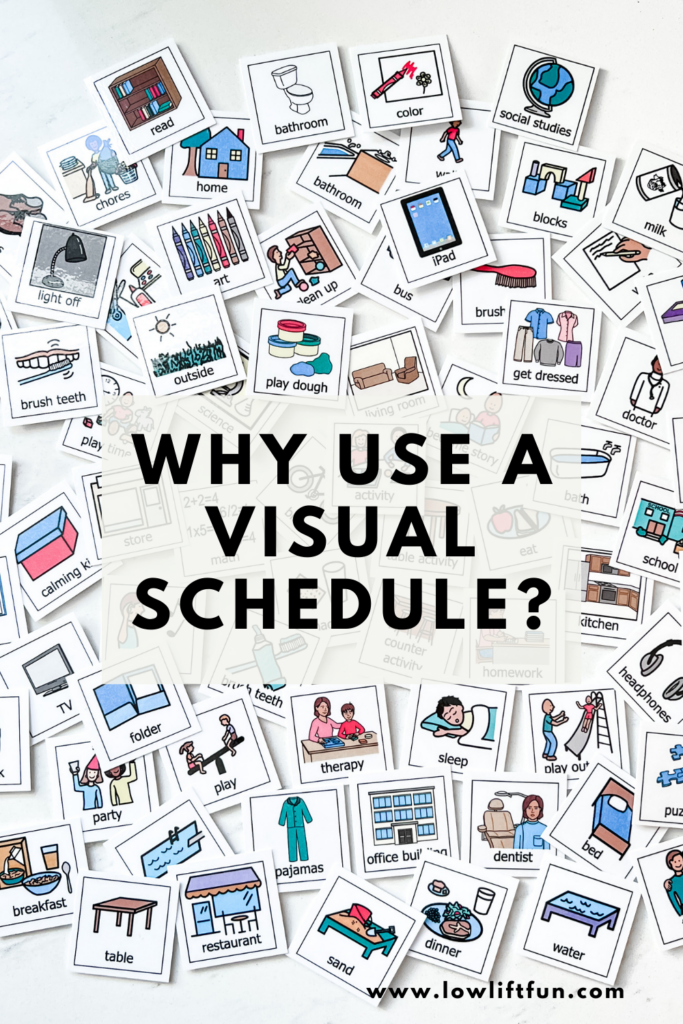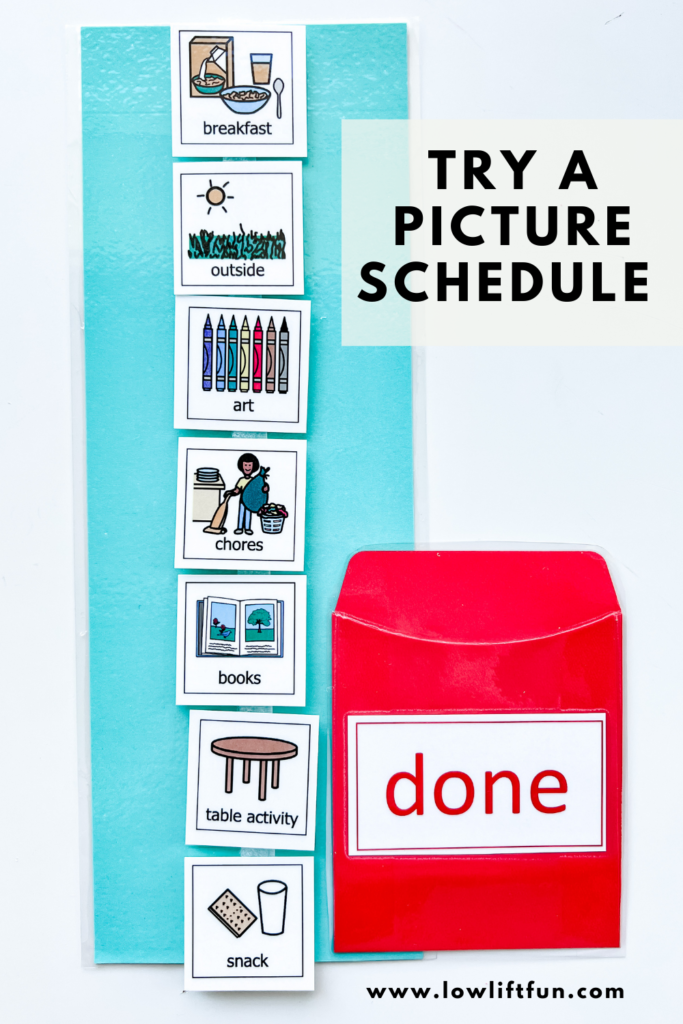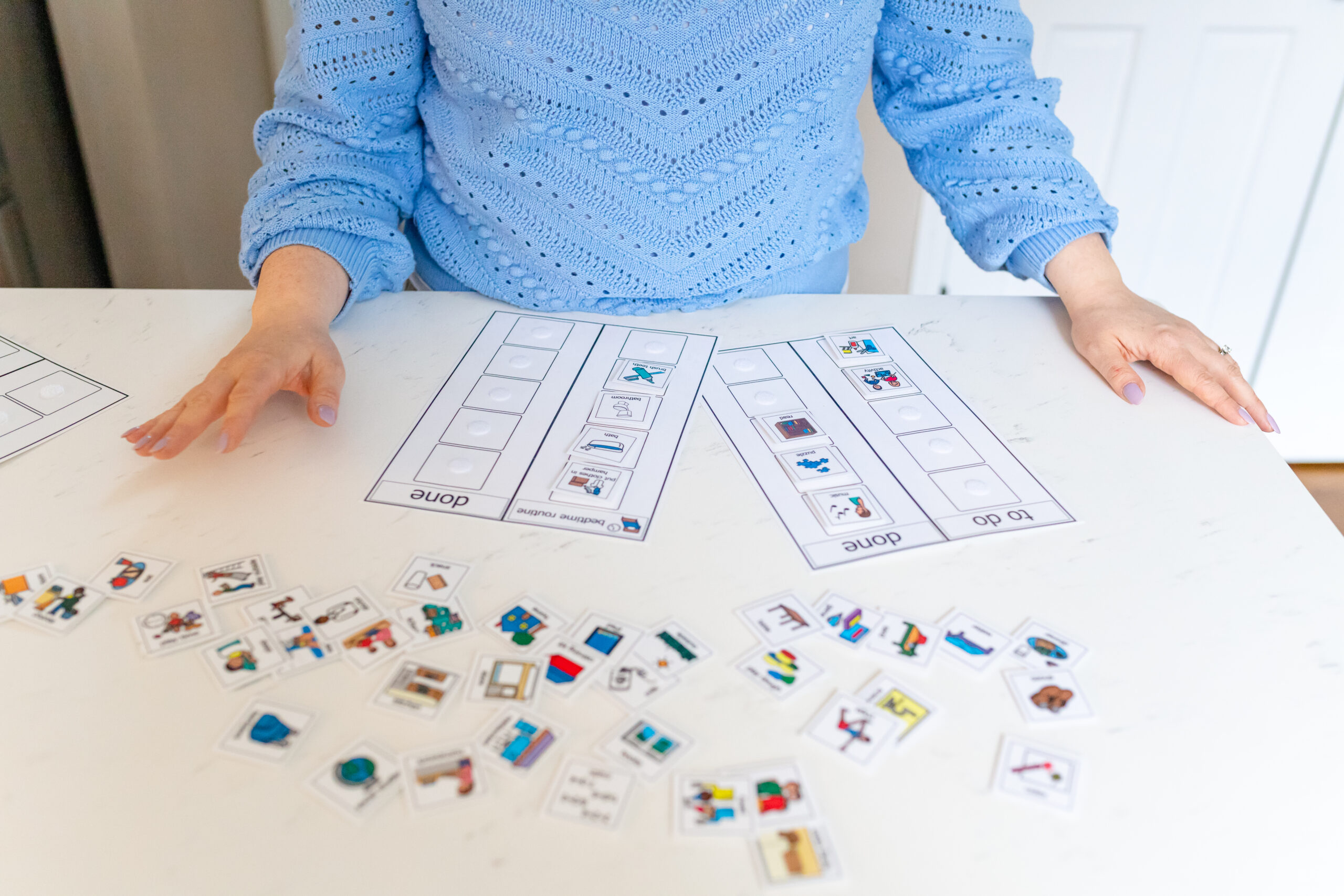You may have heard about visual schedules for kids and wondered, why should I use a visual schedule??
If you’re already invested and ready to get started with a smoother day, take me to the visual schedules!
If you still want more info, here is the answer to why I should use a visual schedule!
Visual schedules are a tool that I love and use every single day in my home, and they were also a tool that I used daily in my work as an elementary principal and teacher.
We often rely on verbal instructions when we’re giving our kids directions. We may find we’re repeating ourselves over and over, and yet we’re still wondering, why aren’t they listening?! Been there, done that.
That’s where visual schedules come in. Pictures are POWERFUL. They can support our words, they can be used instead of words, and we can even empower kids to take ownership of their routines without us!!

Top 10 reasons to use a visual schedule with your child:
1. Help kids understand the plan for the day!
Everyone likes to know what the heck is going on. Adults and kids appreciate knowing what’s ahead and where the day is going. We don’t have to plan the day down to the last detail, but giving a general outline can provide kids with clarity on what to expect.
This is like our to-do list or agenda, but for kids and made with pictures! This predictability can work wonders to help reduce tantrums, anxiety, power struggles, and challenging behavior.
2. Break a routine into steps with clear expectations.
We can use visual schedules to show what to expect for the day, or we can break down a smaller routine into steps (like getting ready in the morning, after school routine, or bedtime). We break the routine into clear, manageable steps for our child, so they can see exactly what’s expected at each point.
The simple pictures clearly show what needs to happen – this empowers kids to take ownership of their routine.
3. Reduce fighting and power struggles with a visual schedule!
When kids know the plan and can anticipate what will happen, they are more likely to cooperate, connect, and collaborate with us. As a result, we see fewer challenging behaviors when our kids understand the clear steps in a routine.
Providing clear routines is a critical component in decreasing the likelihood of challenging behaviors. (Not a magic fix of course, but it can help A LOT.) Visual picture schedules are the perfect combination of both a predictable routine AND clear expectations. This results in more positive interactions, cooperation, and connection with our child.

4. Visual schedules increase listening and help kids follow directions
A visual schedule provides picture cues for what needs to happen next. This helps children to independently accomplish their daily tasks or chores with fewer verbal reminders from us. If they forget what’s next, they can check without needing adult support.
5. A visual schedule is important when there is a change in the normal routine.
Switching to virtual school? Spring break? Summer vacation? School closures? Changes in routines are triggering for many kids, and this can lead to challenging behavior. Offer support during a transition by showing your child what to expect and creating a visual schedule for the new routine.
6. Visual schedules build pride, independence, and confidence.
Include a “done” pocket or space on your child’s schedule. As kids finish tasks, they can move the picture card to the done area. This builds confidence and a sense of pride in what they’ve accomplished.
Positive interactions bread more positive behavior. Visual schedules help your child feel pride in their success, which will also lead to fewer challenging behaviors.

7. Help children learn, focus, and attend to their work or tasks.
A visual schedule allows kids to physically see what needs to be done on the picture cards, and move over tasks that are completed. This active engagement makes less preferred tasks more manageable, and helps kids to focus on what needs to be done.
8. Visual schedules create a more positive environment for kids AND adults.
Visual schedules help children to independently accomplish their daily tasks with fewer verbal reminders – this creates a more positive, connected home environment. Our kids don’t want to be told what to do all day, and we don’t want to repeat instructions all day either. Visual schedules are a win-win all around!
9. Helps the adult build a routine for the day if you’d like to start a daily schedule.
Don’t have a daily routine? Do the days feel like they’re dragging on forever? Are you a stay at home parent or homeschooling family? A visual schedule can also be a great tool to map out how the day will go. This blog post lays out how to create a schedule for your family.

10. Visual schedules are a great tool for ALL kids.
Visual schedules help children to focus, listen, self regulate, and improve positive behaviors at school and home. Picture schedules are a helpful learning tool for ALL children, particularly those in preschool, kindergarten and elementary school. These schedules can also be a game changer for children who are spirited, highly sensitive, Autistic, have ADHD, or other special needs.
Ready to get started with a visual schedule?
Shift behavior with the printable visual schedule digital download (a PDF with 3 schedules and 70+ pictures cards).
Thanks for reading to learn, “Why should I use a visual schedule?!” There are SO many benefits, and this is a great tool if your child need extra support.
And remember to sign up for the Low Lift Fun newsletter to get easy kids’ activities and parenting tips delivered straight to your inbox!
